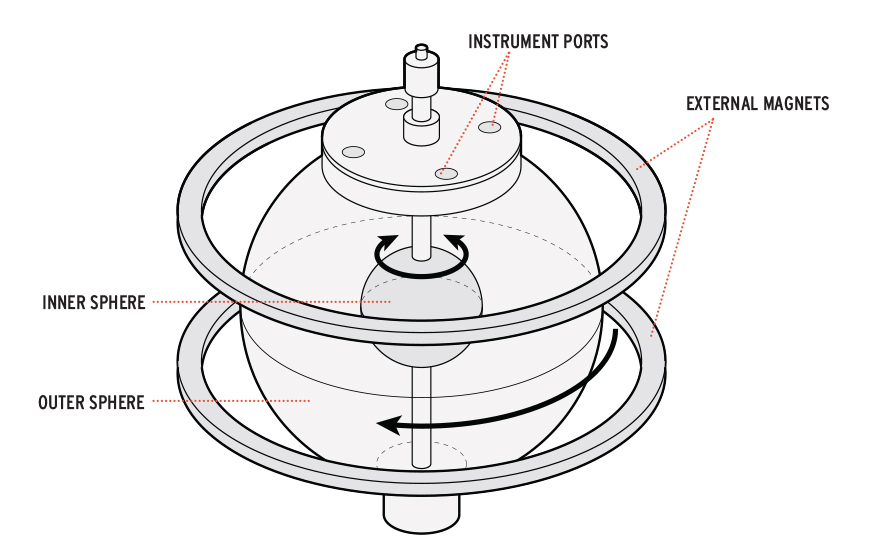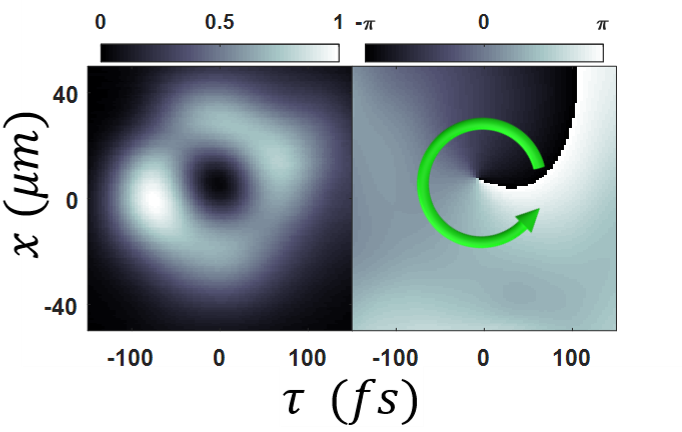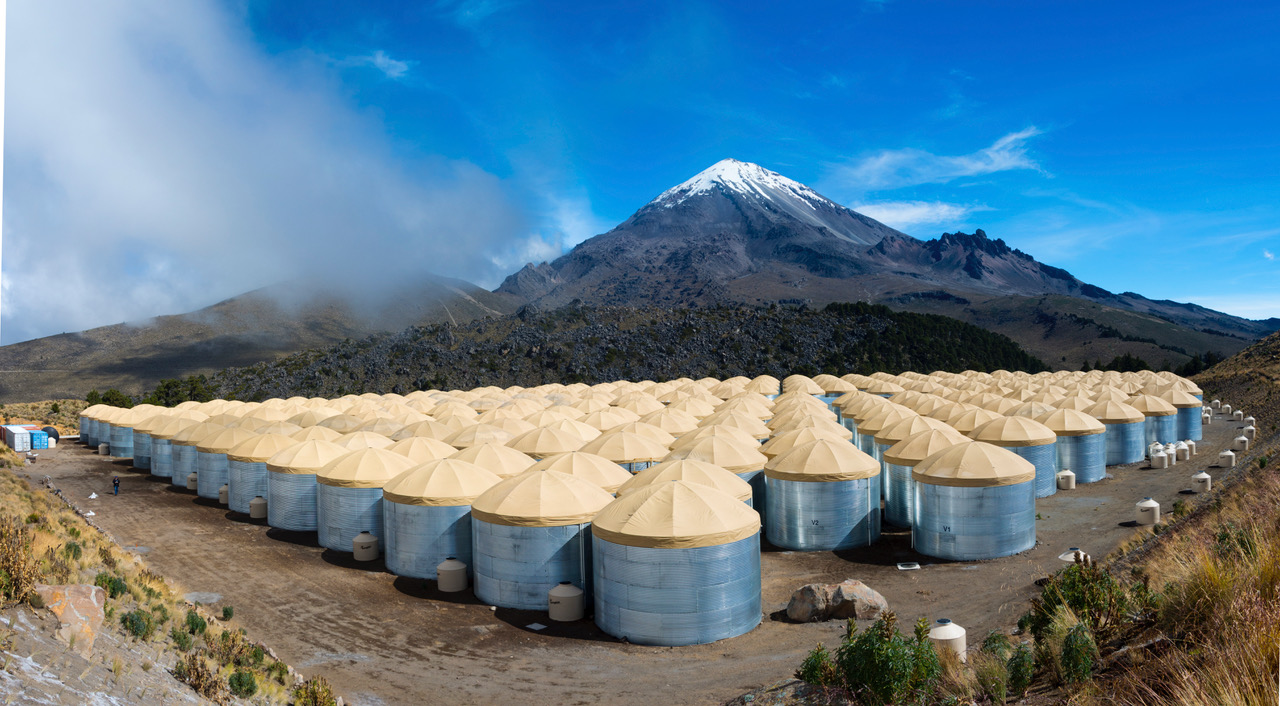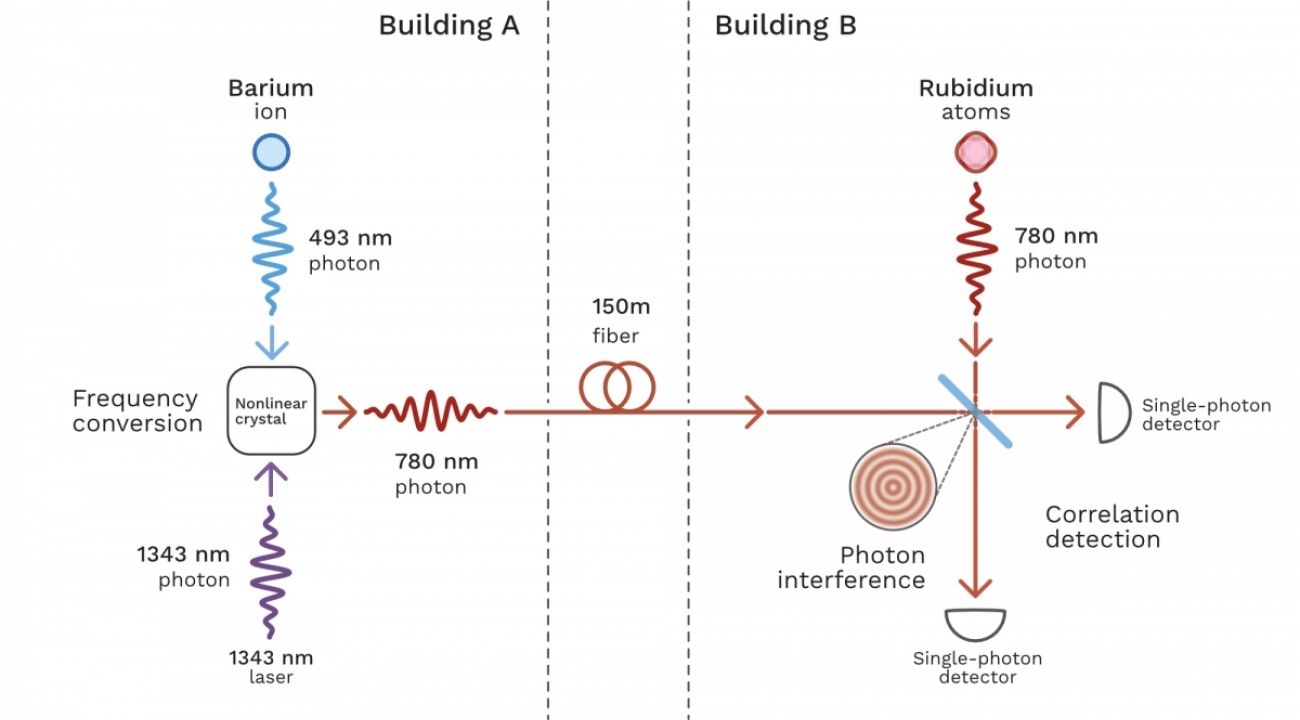Lathrop Lab's Geodynamo Set for Overhaul
- Details
- Published: Friday, March 06 2020 09:53
In a hangar-sized laboratory off Paint Branch Drive, Dan Lathrop gives the signal, and what he often calls simply “the experiment” awakens. A huge, steel sphere with tubes and electrical wires snaking across its surface begins a stately, nearly silent rotation inside a towering cage-like structure.
That’s the experiment running at visitor speed, however. When only Lathrop, a Distinguished Scholar-Teacher and professor in physics, and his graduate students are present to gather data, they crank up its 350 horsepower electric motor to spin 80 times faster, until the 3-meter globe encasing 25,000 pounds of liquid sodium blurs out at four revolutions per second. Professor Dan Lathrop examines the 3-meter steel sphere he uses in simulations of the Earth's "geodynamo." Hidden inside the spinning outer sphere (diagram, below) molten sodium and an even quicker-whirling inner sphere represent the earth's liquid outer core and solid inner core, which create geomagnetism. (Photo by John T. Consoli; diagram by Kolin Behrens)
Professor Dan Lathrop examines the 3-meter steel sphere he uses in simulations of the Earth's "geodynamo." Hidden inside the spinning outer sphere (diagram, below) molten sodium and an even quicker-whirling inner sphere represent the earth's liquid outer core and solid inner core, which create geomagnetism. (Photo by John T. Consoli; diagram by Kolin Behrens)
For safety reasons, in the 11 years since he first switched the experiment on, no lab guest has ever watched it run that fast. Lathrop hasn’t either, exactly. “You can’t see it at full speed,” he said.
If “the experiment” sounds pretty singular, that’s because there’s nothing else like it on the planet. Lathrop, an expert in turbulent flows, envisioned the giant apparatus and several smaller predecessors as a way to simulate and perhaps even predict changes in the Earth’s magnetic field, which originates in its core and helps protect the surface from harmful solar radiation. While the machine has fascinated the geophysics community and generated useful results about planetary magnetic fields, it has never quite fulfilled Lathrop’s hopes. So this year, supported by a recently renewed National Science Foundation grant, he and his lab members will undertake a painstaking process to drain the flammable sodium, dismantle the device, upgrade it and—if the plan works—create a better magnetic model of the Earth.
Our planet has a “g eodynamo,” a self-generating, self-sustaining magnetic field created by flows in its molten outer core, a layer of mostly iron and nickel more than 3,000 kilometers beneath our feet. Swirling turbulence in the liquid metal, caused by convection and the planet’s rotation, gives rise to electrical currents and magnetic fields that feed on each other.
eodynamo,” a self-generating, self-sustaining magnetic field created by flows in its molten outer core, a layer of mostly iron and nickel more than 3,000 kilometers beneath our feet. Swirling turbulence in the liquid metal, caused by convection and the planet’s rotation, gives rise to electrical currents and magnetic fields that feed on each other.
So far, Lathrop’s experiment needs external current to generate a magnetic field; soon he hopes that will no longer be necessary. Doctoral students Rubén Rojas and Artur Perevalov in physics, along with Heidi Myers in geology and Sarah Burnett in mathematics, have been researching ways to modify a hidden, inner sphere of the device—analogous to Earth’s solid inner core—by adding texture to create swirling, helical flows in the highly conductive liquid sodium, generating electrical currents.
It’s never been tried before, so the results are hard to predict.
“I try not to be a foolish optimist, but you know, you aren’t going to build an experiment like this without a certain amount of optimism that there are interesting things to see,” Lathrop said.
The biggest potential prize would be an ability to predict the “weather” of Earth’s magnetic field, which is constantly in flux. Geologic evidence suggests the poles have reversed hundreds of times—most recently 780,000 years ago—and indeed, the North Pole has been moving from Canada toward Russia with increasing speed in recent years. During such a flip, much of the planet’s surface could have a weaker magnetic shield from solar radiation. (For a preview of what that could be like, look at Mars, which lacks a geodynamo.)
Even now, solar storms do create problems on Earth, damaging satellites and sensitive electronics, said Sara Gibson, a solar physicist at the National Center for Atmospheric Research in Boulder, Colo. For instance, if a massive 1859 solar storm that caused aurora as far south as the tropics hit today, it could fry communications and electrical grids worldwide.
“Dan’s work is really important, because it’s vital to understand the Earth’s magnetic field, which is coupling with what’s coming from the sun, and creating these magnetic impacts,” Gibson said.
Lathrop doesn’t promote his research with disaster scenarios. A pole reversal may not be in the offing at all, and would take more than 1,000 years. But what about scientific curiosity as well as simple prudence concerning a factor that allowed life to arise on earth?
“You think you’d want a solid scientific base knowing, well, how does it work, and how did it get there?” he said. “Where’s it at now? And where’s it going?”




